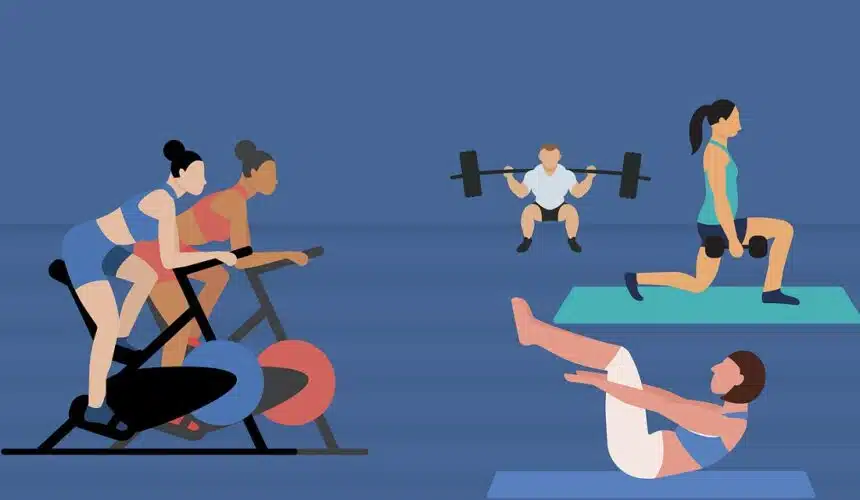Finding the perfect timing between eating and working out can be a puzzle for many fitness enthusiasts. Should you hit the gym right after a meal, or is it better to wait? The answer isn’t one-size-fits-all; it depends on various factors, including the type of exercise, the size and composition of your meal, and your personal preferences. Let’s delve into the science behind how long to wait after eating to workout.
Understanding Digestion:
Before diving into the details of how long to wait after eating to workout, it’s essential to understand how digestion works. When you consume food, your body directs blood flow to your digestive system to break down and absorb nutrients. This process requires energy and can affect your ability to exercise effectively immediately after eating.
Factors Affecting Waiting Time:
Meal Size and Composition:
The size and composition of your meal play a crucial role in determining how long to wait after eating to workout. A large, heavy meal rich in fats and proteins may take longer to digest compared to a small, carbohydrate-rich snack.
Carbohydrates are the body’s preferred source of energy during exercise as they provide quick fuel. Therefore, if your meal is primarily carbohydrates. You may be able to exercise sooner after eating compared to a meal high in fats and proteins.
Exercise Intensity and Duration:
The intensity and duration of your workout also influence the waiting time after eating. Low to moderate-intensity exercises generally allow for a shorter waiting period compared to high-intensity workouts.
High-intensity exercises, such as weightlifting or high-intensity interval training (HIIT), require more energy. They may also be uncomfortable if performed immediately after a meal.
Personal Tolerance:
Everyone’s body reacts differently to food and exercise. Some individuals may feel fine exercising shortly after eating, while others may experience discomfort or digestive issues.
Listening to your body is crucial. Pay attention to how you feel during and after exercise. This helps determine the optimal waiting time for you.
How Long to Wait After Eating to Workout:
Knowing how long to wait after eating to workout can significantly impact your performance and overall workout experience. Let’s delve into the ideal waiting periods after eating, tailored to different types of meals and workout intensities.
Small Snacks: If you’ve consumed a small snack rich in carbohydrates, such as a piece of fruit or a granola bar, you may be able to start exercising within 30 minutes to an hour. This can provide your body with the necessary fuel to power through your active session and optimize performance.
Larger Meals: For larger meals containing a mix of carbohydrates, proteins, and fats, it’s advisable to wait 2-3 hours before engaging in moderate-intensity exercise. This period allows the body to process the nutrients properly, avoiding any unnecessary strain during physical activity.
High-Intensity Workouts: When it comes to planning a high-intensity workout or weightlifting session, understanding how long to wait after eating to workout is crucial for optimal performance. The recommended 3-4 hour window is crucial. It allows the body to properly digest the meal. This minimizes the risk of discomfort and maximizes energy levels. By waiting this time period, you give your digestive system the opportunity to clear your stomach and intestines of food. This ensures that your body can focus on powering through your workout rather than dealing with digestion.
Tips for Pre-Workout Nutrition:
Plan Ahead: When it comes to optimizing your workout performance, timing is key. Planning your meals around your workout sessions can have a significant impact on how you feel during exercise. To avoid discomfort and maximize energy levels, it’s essential to give yourself enough time to digest before hitting the gym. The general rule of thumb is to wait at least 2-3 hours after a larger meal before engaging in intense physical activity.
Optimize Macronutrients: When it comes to recovering your body after exercise, maintaining a balance of carbohydrates, proteins, and healthy fats is key. It’s important to understand that each macronutrient plays a unique role in supporting overall health and wellness. Focusing on consuming a well-rounded meal is important. It should include all three macronutrients. This can optimize performance, enhance recovery, and promote long-term health.
Hydration: Stay hydrated before, during, and after your workout to maintain optimal performance and aid digestion.
Experiment: Pay attention to how different foods and timing strategies affect your energy levels and performance. Experiment with various pre-workout meals and waiting times to find what works best for you.
Conclusion:
Now that you have the answer to the question of “How Long to Wait After Eating to Workout,” it’s clear that the ideal waiting time after eating before exercising varies depending on factors like meal size, composition, exercise intensity, and personal tolerance. While there are general guidelines to follow, it’s essential to listen to your body and adjust accordingly. By understanding the science behind digestion and implementing smart pre-workout nutrition strategies, you can optimize your workout performance and achieve your fitness goals effectively.
For more fitness tips and guidance, join our community on Facebook and Instagram and explore related articles on our website. Let’s embark on this journey to better health and fitness together!

Here at Selfweightloss, we show you how to lose weight and maintain a healthier lifestyle with tips and articles on Weight Loss, Fitness, Diet, Nutrition and Food, updated daily by our community of authors and editors.











